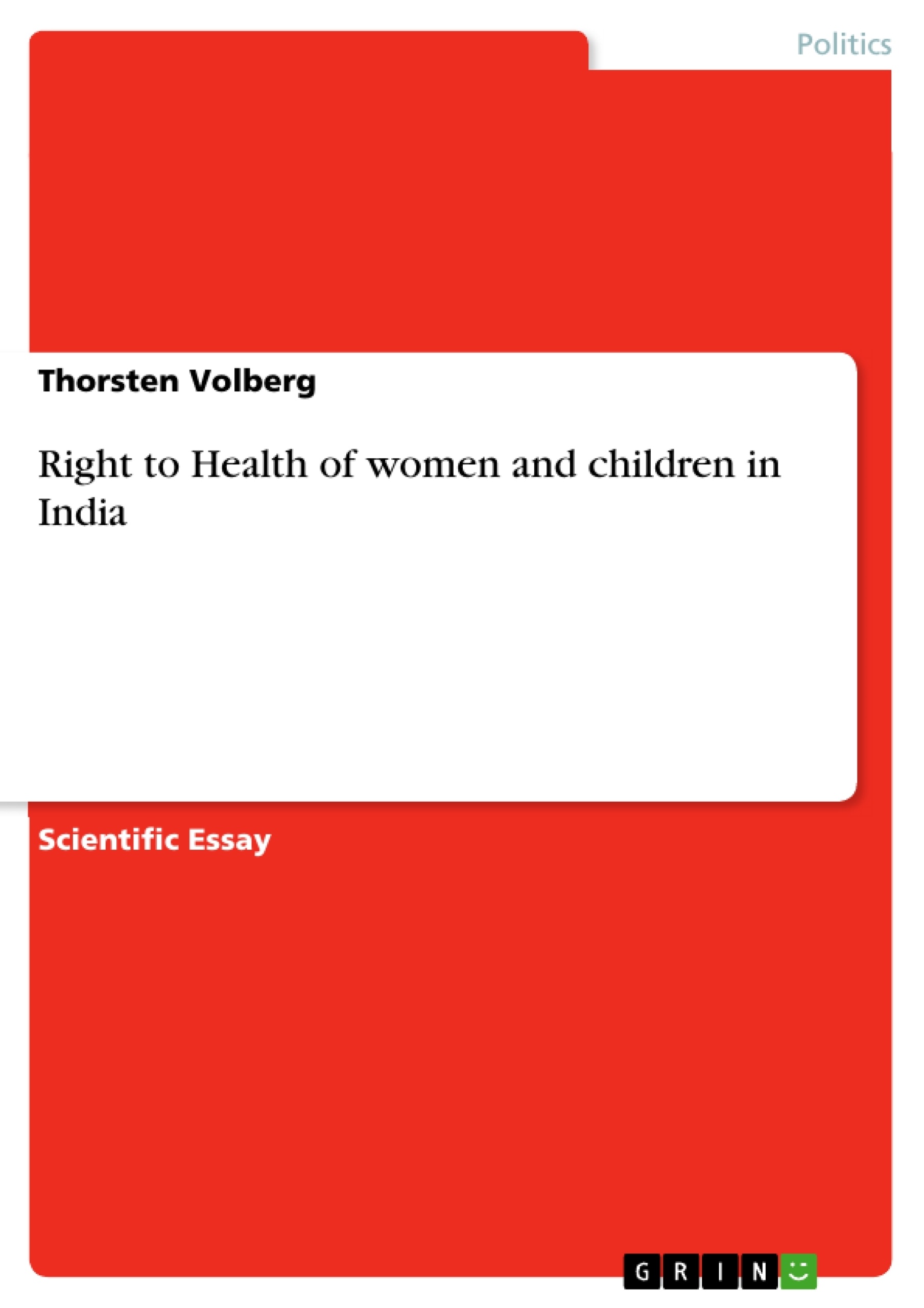India stands today at a crucial crossroad in its path towards greater social progress and actualization of children’s and women rights, both of which are inextricably linked to each other, and to which the Government – according to the Constitution and ratification of international treaties - is deeply committed. Still, the situation of India's women and children is marked by diversity and persistent disparities and nearly two centuries of colonialism and many more centuries of a rigid caste system, have “maintained a stubborn barrier to meaningful social transformation.”
International human rights law has been designed to protect the full range of human rights required for people to have a full, free, safe, secure and healthy life. Health care is seen as one of the fundamental principles of the global human rights system, and the right to live a dignified life can never be attained without it. Since women and children’s health is strongly linked to their status in Indian society, a strong focus must lay on the foundation of women and children’s right to health, as it is written down in several international agreements and treaties India has ratified.
The primary basis of the United Nations activities to promote, protect and monitor human rights and fundamental freedoms is the International Bill of Human Rights, including the Universal Declaration of Human Rights (1948), the International Covenant on Economic, Social and Cultural Rights (1966), and the International Covenant on Civil and Political Rights (1966) and its two optional protocols. When a State ratifies one of the Covenants, it accepts a solemn responsibility to apply each of the obligations embodied therein and to ensure the compatibility of their national laws with their international duties.
Inhaltsverzeichnis (Table of Contents)
- Introduction
- Women and Children in Indian society
- Universal Declaration of Human Rights
- International instruments
- International Covenant on Economic, Social and Cultural Rights (CESCR)
- International Convention of the Elimination of All Forms of Racial Discrimination (CERD)
- Convention on the Elimination of All Forms of Discrimination against Women (CEDAW)
- Convention on the Rights of the Child (CRC)
- Constitution of India
- National Human Rights Commission of India (NHRC)
- Conclusion
Zielsetzung und Themenschwerpunkte (Objectives and Key Themes)
This document examines the right to health for women and children in India, exploring the legal framework established by international agreements and the challenges faced in ensuring its realization within Indian society.
- International legal framework for health rights
- Women's and children's health issues in India
- Role of the Indian Constitution and National Human Rights Commission
- Challenges in ensuring health rights for vulnerable groups
- Importance of implementing international legal obligations
Zusammenfassung der Kapitel (Chapter Summaries)
The introduction outlines the importance of the International Bill of Human Rights in promoting and protecting human rights, emphasizing the right to health as a fundamental principle. It highlights the particular challenges faced by women and children in India and the need to address their health needs.
The chapter on women and children in Indian society explores the significant disparities in health outcomes between genders, particularly during childhood and reproductive years. It examines the socioeconomic factors impacting women's health, including poverty and limited access to education and employment opportunities. The chapter also discusses the vulnerabilities of children in India, including poverty, malnutrition, and gender discrimination.
The chapter on the Universal Declaration of Human Rights outlines the fundamental right to a standard of living adequate for health and well-being, including access to medical care and social services. It also highlights the special care and assistance required for mothers and children, regardless of their birth status.
The chapter on international instruments explores the key treaties ratified by India that relate to the right to health, including the International Covenant on Economic, Social and Cultural Rights (CESCR), the International Convention on the Elimination of All Forms of Racial Discrimination (CERD), the Convention on the Elimination of All Forms of Discrimination against Women (CEDAW), and the Convention on the Rights of the Child (CRC). The chapter examines the provisions within these treaties that address the right to health for women and children, highlighting the importance of equal access to health care and the need for protective measures for vulnerable groups.
Schlüsselwörter (Keywords)
Key focus areas include the right to health, women's and children's health, international human rights law, International Covenant on Economic, Social and Cultural Rights (CESCR), Convention on the Elimination of All Forms of Discrimination against Women (CEDAW), Convention on the Rights of the Child (CRC), Indian Constitution, National Human Rights Commission of India (NHRC), poverty, gender discrimination, malnutrition, and health disparities.
- Citation du texte
- Thorsten Volberg (Auteur), 2006, Right to Health of women and children in India, Munich, GRIN Verlag, https://www.grin.com/document/53930



